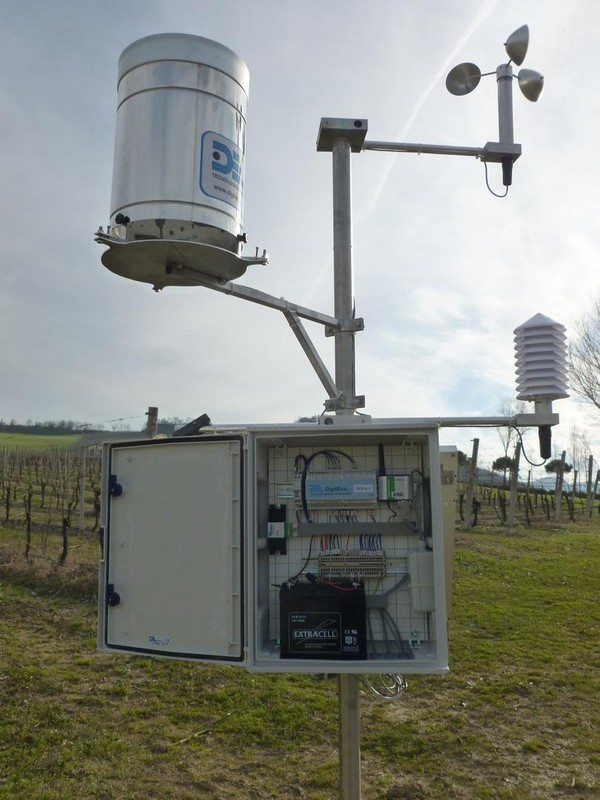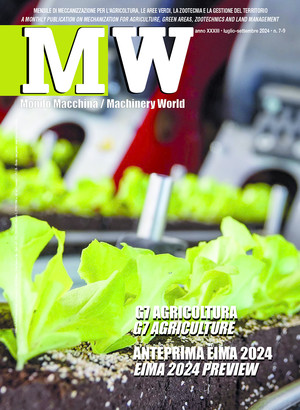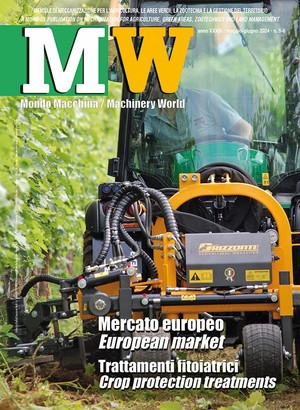
Weather stations for precision farming
The timely tracking of meteorological data is of the utmost importance in improving the success of crops. Modern systems are capable of providing information with high precision, but the systematic maintenance of the weather stations remains the basic condition for their efficiency over time
The importance of climate on plant growth has been well known for some time, so much so that it constitutes a specific discipline, Agrometeorology, which studies the role of meteorological parameters on plant production. It tries to understand the underlying physical laws, so as to better forecast and orient the typical micro-climate of a given area. It is an issue of growing importance, especially for its close connection with precision agriculture and integrated pest management.
In these areas, meteorological data is indispensable to identify in detail the optimal times to take action on the soil and crops, for example in the evapotranspiration calculation to identify the most appropriate time to carry out irrigation, or to best apply the predictive models aimed at the targeted fight against some diseases.
In agriculture, the meteorological factors that count most are temperature and humidity (both air and soil), wind speed and direction, solar radiation intensity, and precipitation of different types (rain, snow, hail). To be able to measure them correctly and with a good level of accuracy, the appropriate equipment must be used, often gathered in a single “weather station”.
Sensors
Modern weather stations incorporate numerous sensors; their types vary based on the fields of application. In general, a weather station is usually constituted by: rain sensor, to detect rainfall; anemometer, to measures wind speed and direction; air temperature sensor; air humidity sensor; barometer, to monitor atmospheric pressure. In the field of agrometeorology, this basic equipment can be supplemented with sensors for solar and ultraviolet radiation, for leaf wetness, and for the humidity and temperature of the soil. The weather station is completed by a sun screen, a container able to protect the temperature and humidity sensors from direct solar radiation, which would distort the readings. These are screens normally equipped with passive ventilation: a series of openings lets the hot air out, bringing in fresh air from the bottom. In critical situations (high radiation), it can be useful to install a small fan, making the ventilation active.
The weather station can be powered by the traditional power grid or through a solar panel with a buffer battery. The latter is obviously the most widely used, particularly in view of the need to install the weather stations at a distance from buildings. This solution is all the more widespread in agriculture, where the stations are often located in cultivated fields. Sending and processing the weather data is normally done through a direct connection to a computer (often via Wi-Fi) or via a GSM modem. The weather data can be viewed via the web from any computer, and often they also include visual displays for quick reference. Some software applications can also analyse the data and send text messages or emails to alert the user of the occurrence of certain conditions.
The correct installation
In order to work properly, but above all to obtain weather data comparable with that obtained from other stations, it is important to install weather stations as carefully as possible. In particular, the World Meteorological Organization, an organization founded in 1873 which deals with meteorology and climate on a global level, has established rules and parameters for the correct installation of different sensors, including minimum requirements borrowed from the guidelines of the AASC (American Association of State Climatologist) and the EPA (US Environmental Protection Agency), two American associations concerned with climate and weather. The weather station is a delicate instrument, with different mechanical and electronic parts exposed to the elements, so it is important to perform a precise and meticulous maintenance, both routine and extraordinary. Routine maintenance is primarily concerned with checking the operating efficiency based on the recorded values: clearly abnormal data often indicates a failure and malfunction. It is also important to prevent the accumulation of dust, dirt and foreign matter (leaves, etc.) especially on the inlet of the rain gauge, on the ventilated screen, and on the radiation sensors. Occasionally, it may be useful to compare the measured data with the data of professional units in the area, such as those of airports or regional meteorological services.
Extraordinary maintenance requires rather more attention: every 15-20 days you have to clean the solar power panel and the sun shield (because the accumulation of dirt will make it heat up more). The rain gauge must be checked: for example, in the spring and summer, wasps might build their nests inside. After precipitation of water mixed with sand, it is important to wipe the inside of the rain gauge from the deposited residue. Every 3-6 months the unit should be completely disassembled, cleaned internally (paying particular attention to the sun screen), lubricating the moving parts (anemometer, rain gauge, etc.). During reassembly, particular attention must be given to the watertightness of the electronic parts.
The usefulness of the ventilated screen
Although it would not seem like it, one of the hardest weather parameters to determine in terms of reliability is temperature. Not so much for the sensor, which is actually of quite simple construction, but because of the influence that a number of factors may have on the recorded value, possibly leading to significant errors. The most critical condition is due to intense sunshine, which involves a significant overestimation of the temperature. Obviously it is essential that the sensor is of high quality, free from defects, and that the manufacturer declares all technical specifications. In addition to the well-known ranges of measurement, resolution, and accuracy, the technical specifications of great importance for temperature sensors are the values of the Radiation Induced Error, often declared by the manufacturer for both passive solar screens and fan-equipped solar screens. These values are normally stated in degrees of temperature that the sensor may overestimate at “solar noon” in the most critical conditions, i.e. with an irradiance of 1040 W/m2, with a wind speed of less than 1 m/s. Even excellent sensors may overestimate the actual temperature by 2°C with a passive screen and 0.3°C with a ventilated screen. To this we need to obviously add the accuracy of the sensor, which normally is ±0.5°C.








